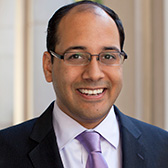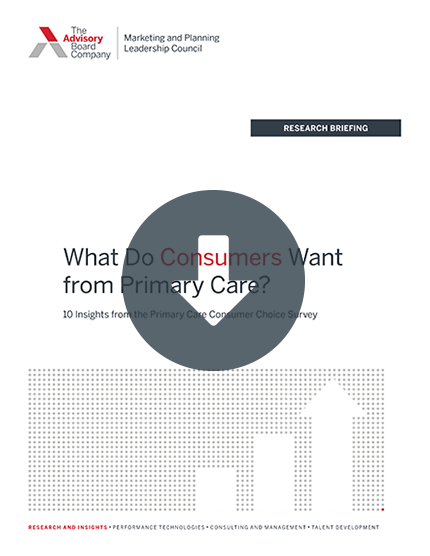Auto logout in seconds.
Continue LogoutConsistently seeing the same doctor is associated with a lower risk of death, according to a research review published last month in BMJ Open.
“Our research has found that patient accessibility is the number one driver of physician loyalty today”- Hamza Hasan
Study details
For the study, researchers from the United Kingdom looked at 22 studies from nine countries, including the United States, to determine the relationship between "continuity of care" and mortality.
The researchers found 18 of the studies they reviewed showed statistically significant reductions in mortality among patients who consistently saw the same doctor. Of those 18 studies, 16 showed lower all-cause mortality, according to the paper.
The period over which continuity was measured "varied greatly between studies" included in the review, the authors wrote. Specifically, it ranged from "a single weekend in the hospital up to 17 years," according to the review.
First author of the study Denis Pereira Gray, of St. Leonard's Practice, said the correlation between higher continuity of care and lower mortality held true for "specialists, as well as generalist doctors." He added that his team "found articles which include surgeons and psychiatrists," which led the researchers to believe that "this is a human effect that goes across medicine."
The researchers in the review wrote, "This systematic review reveals that despite numerous technical advances, continuity of care is an important feature of medical practice, and potentially a matter of life and death."
Limitations
However, there were several limitations to the review. For instance, the researchers were unable to compile a meta-analysis to determine how much the risk of death dropped when patients had continuity of care. Further, the study did not account for patients' age, sex, socioeconomic status, or smoking habits. In addition, the researchers looked back at patient records rather than following them over a period of time.
Discussion
The researchers did not identify how staying with the same doctor influences mortality. However, they offered several possible explanations.
Phil Evans, an author on the study and an associate professor of general practice and primary care at University of Exeter Medical School in the United Kingdom, said that a possible explanation for the findings is that "as patients are more satisfied with their doctor they are more likely to take their advice on screening for instance, such as pap [tests] for women, or with treatment like taking statins if they are recommended."
Separately, Ronald Epstein—a professor of family medicine, psychiatry, oncology, and medicine at the University of Rochester School of Medicine and Dentistry, who was not involved with the study—said the findings "make sense with what we know about the benefits of continuity of care." According to Epstein, sticking with the same provider allows a doctor to "get to know their patient as a person rather than just the condition they have." That layer of familiarity, gives the provider "a better sense of the patient's values and preferences, as well as complexities around the treatment plan and the social situation," Epstein said.
Pereira Gray noted the importance of continuity of care but also cautioned that it "is not a panacea but a desirable principle." He added, "Some patient-doctor relationships, like all other human relationships, may break down. Some doctors in all branches of medicine many have blind spots and make mistakes, even with patients they know well" (Kalaichandran, ABC News, 6/28; Schreiber, Yahoo Lifestyle, 6/28; Gander, Newsweek, 6/28; BBC News, 6/29; Pereira Gray, BMJ Open, accessed 7/5).
Advisory Board's take

Hamza Hasan, Practice Manager, Medical Group Strategy Council
This study shows what many physicians often express: the health benefits of a strong and consistent patient-physician relationship. However, with the rise in consumerism in health care, exemplified by the 30% increase in the number of retail clinics from 2015-2017 and the continued growth of high-deductible health plans, many doctors may be wondering what they can do to maintain connections with more consumer-oriented patients.
Our research has found that patient accessibility is the number one driver of physician loyalty today. Indeed, when we surveyed patients on possible scenarios in which they would switch their primary care physician, 7 of the 10 top reasons were access-related. These included the availability of weekend hours, the ability to schedule same-day appointments, and a short in-clinic wait time.
“Practices often fall short in meeting two common patient demands: extended office hours and a centralized scheduling service”
While many practices have been working to ensure better access, we've found that they often fall short in meeting two common patient demands: extended office hours and a centralized scheduling service. The organizations we've spoken two who have implemented changes to meet these demands have seen a remarkable ROI on their efforts.
In addition, when the visit actually occurs, physicians who collaborate with patients and offer shared decision making tools as part of the care plan are more likely to retain patients over time.
To learn more about how to implement these changes, including case studies of medical groups that have implemented them and the results they've seen, as well as the other must-have characteristics of the consumer-focused physician, view our new research report.
Don't miss out on the latest Advisory Board insights
Create your free account to access 1 resource, including the latest research and webinars.
Want access without creating an account?
You have 1 free members-only resource remaining this month.
1 free members-only resources remaining
1 free members-only resources remaining
You've reached your limit of free insights
Become a member to access all of Advisory Board's resources, events, and experts
Never miss out on the latest innovative health care content tailored to you.
Benefits include:
You've reached your limit of free insights
Become a member to access all of Advisory Board's resources, events, and experts
Never miss out on the latest innovative health care content tailored to you.
Benefits include:
This content is available through your Curated Research partnership with Advisory Board. Click on ‘view this resource’ to read the full piece
Email ask@advisory.com to learn more
Click on ‘Become a Member’ to learn about the benefits of a Full-Access partnership with Advisory Board
Never miss out on the latest innovative health care content tailored to you.
Benefits Include:
This is for members only. Learn more.
Click on ‘Become a Member’ to learn about the benefits of a Full-Access partnership with Advisory Board
Never miss out on the latest innovative health care content tailored to you.

